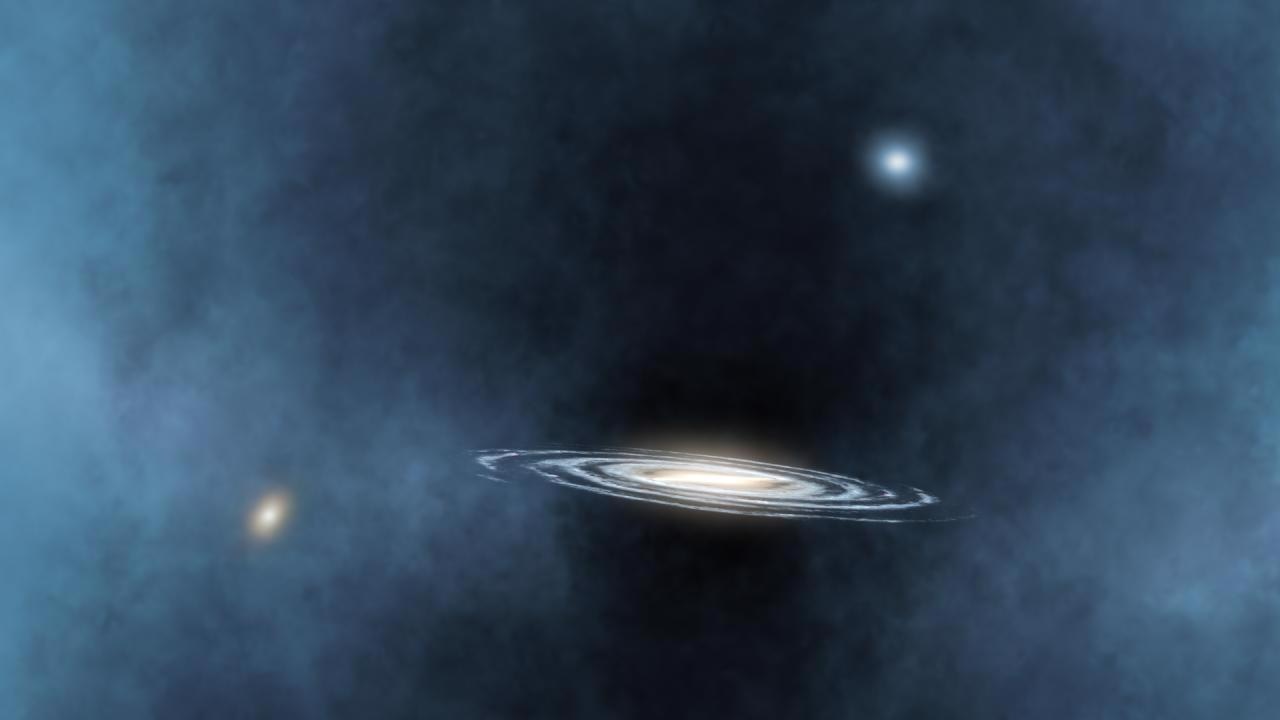Jun 10 2021
At the center of nearly every sufficiently giant galaxy, there is a black hole whose highly intense gravitational field impacts just a small region around the core of the galaxy.
 Artistic composition of a supermassive black hole regulating the evolution of its environment. Image Credit: Gabriel Pérez Díaz, SMM (IAC) and Dylan Nelson (Illustris-TNG).
Artistic composition of a supermassive black hole regulating the evolution of its environment. Image Credit: Gabriel Pérez Díaz, SMM (IAC) and Dylan Nelson (Illustris-TNG).
Although such objects are thousands of millions of times smaller when compared to their host galaxies, the prevailing belief is that the Universe can be understood only if the emergence of galaxies is controlled by the activity of such black holes. This is because the observed properties of the galaxies cannot be described without these black holes.
Theoretical predictions indicate that as these black holes grow, they also produce enough energy to heat up and expel the gas inside galaxies to greater distances. Visualizing and explaining the mechanism through which this energy interacts with galaxies and alters their evolution is, therefore, a fundamental question in present-day astrophysics.
Keeping this aspect in mind, a study headed by Ignacio Martín Navarro, a scientist from the Instituto de Astrofísica de Canarias (IAC), has gone one step ahead. He has attempted to observe whether the energy and matter discharged from around these black holes can change the evolution of the host galaxy and also the satellite galaxies around it, at even farther distances.
To achieve this, the researchers have used the Sloan Digital Sky Survey, which enabled them to examine the properties of the galaxies in thousands of clusters and groups. The results of this study, which were initiated during Ignacio’s stay at the Max Planck Institute for Astrophysics, were recently published in Nature magazine.
Surprisingly we found that the satellite galaxies formed more or fewer stars depending on their orientation with respect to the central galaxy.
Annalisa Pillepich, Study Co-Author and Researcher, Max Planck Institute for Astronomy
To describe this geometrical impact on the properties of the satellite galaxies, the team utilized a cosmological simulation of the Universe known as Illustris-TNG. The code of this Universe has a particular way of tackling the interaction between central black holes and their host galaxies.
Just as with the observations, the Illustris-TNG simulation shows a clear modulation of the star formation rate in satellite galaxies depending on their position with respect to the central galaxy.
Annalisa Pillepich, Study Co-Author and Researcher, Max Planck Institute for Astronomy
This finding is more significant because it offers observational support for the concept that central black holes have a crucial role to play in controlling the evolution of galaxies, which is a fundamental feature of present-day understanding of the Universe.
However, this hypothesis is constantly questioned, considering the challenges of quantifying the potential impact of the black holes in real galaxies, instead of considering only the theoretical implications.
Such findings further indicate that there is a specific coupling between the black holes and their galaxies, through which they can discharge matter to great distances from the galactic centers and can even impact the growth of other neighboring galaxies.
So not only can we observe the effects of central black holes on the evolution of galaxies, but our analysis opens the way to understand the details of the interaction. This work has been possible due to collaboration between two communities: the observers and the theorists which, in the field of extragalactic Astrophysics, are finding that cosmological simulations are a useful tool to understand how the Universe behaves.
Ignacio Martín Navarro, Study First Author, Instituto de Astrofísica de Canarias
Journal Reference:
Martín-Navarro, I., et al. (2021) Anisotropic satellite galaxy quenching modulated by black hole activity. Nature. doi.org/10.1038/s41586-021-03545-9.